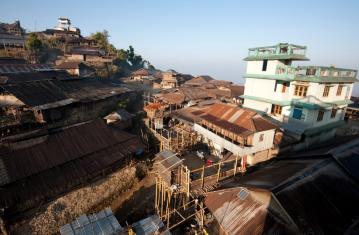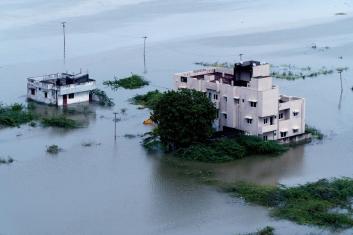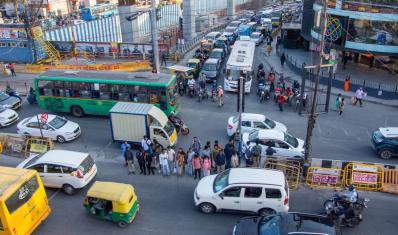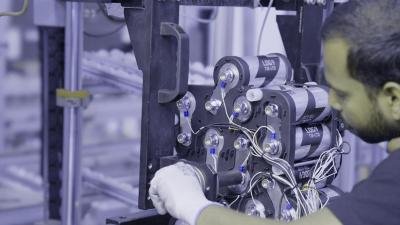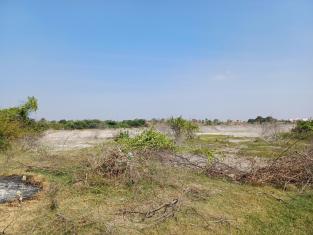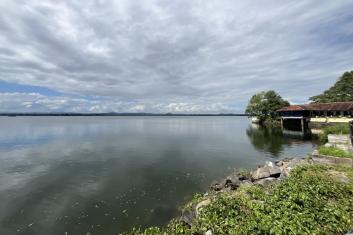Blogs
The blogs are part of WRI India’s mission to provide unbiased, expert analysis on the most important environmental issues facing the world today.
In today’s rapid-fire, fragmented information culture, we hope these insights will provide a measure of clarity to decision-makers worldwide.
-
Enabling Development in Nagaland: The Case for Energy Access Explorer
by , and -Socio-economic development and human well-being are intrinsically linked to shifts in energy access. Of the 169 targets set under the Sustainable Development Goals (SDGs) framework, 125 are linked to energy access. Global electricity access improved from 84% in 2010 to 91% in 2021. Since 2017 near-universal access to electricity has been provided to 2.63 crore households across India. In Nagaland, 1,32,507 of 5,23,870 households have...
-
Uphill Task at Bonn and Baku Climate Negotiations: Finalize Carbon Market Rules
by -Last year’s Conference of Parties (COP28) at Dubai failed to deliver on Article 6 of the Paris Agreement, which governs carbon markets. Article 6 allows countries to meet their climate targets by trading carbon credits earned from the reduction of Greenhouse Gas (GHG) emissions. Even after two weeks of negotiations, the 197 participating nations in Dubai were unable to reach consensus on the rules governing carbon markets.
Almost...
-
Small Businesses, Large Impacts: Effect of Extreme Rainfall on Chennai’s MSMEs
by and -Srikant Narayanan* is a second-generation owner of a small auto component manufacturing unit in Ambattur Industrial Estate, in Chennai’s automotive manufacturing hub. The estate has about 2000 micro, small and medium enterprises (MSMEs), of which 600-800 are micro units, more than a thousand are small units, and only 10-15 are medium units. Most of his workers travel to Ambattur from other parts of Chennai and from neighboring...
-
Six Elements to Make Our Streets #SaferByDesign
by , and -India’s vibrant streets, a reflection of its dynamic culture, are unfortunately also the setting of a grim reality. Every year, approximately 1.5 lakh people die on Indian roads, which translates to an average of 47 accidents and 18 deaths every hour. In 2022 alone, a staggering 4.6 lakh road crashes were reported, underlining the urgency to look at our roads and streets from a different lens. We must move on from traditional reactive approaches to consider embracing the...
-
How a Climate-Proofed MSME Sector Can Drive Tamil Nadu’s EV Leadership
by -This article was originally published in the Hindu on 26 October 2023.
Tamil Nadu is gearing up to be a global vehicle (EV) manufacturing hub, with the government seeking to attract ₹50,000 crore in investments and envisioning 1.5 lakh new jobs in the EV sector in the next five years. Investments worth almost ₹40,000 crore are already underway, and as per recent data, Tamil Nadu...
-
Decoding India’s Battery R&D Ecosystem: The Commercialization Challenge
by and -The energy storage sector, which is a critical component of both the renewable energy (RE) and electric vehicle (EV) sectors, is projected to require 600 GWh of battery storage by 2030 – a striking 15 fold growth from 2022. In line with its commitment to achieve net zero by 2070, India is taking rapid strides to develop its economy along low-carbon pathways. To accelerate this momentum, we require substantial investments in research and...
-
Reimagining Climate Adaptation
by -Being at the forefront of climate disasters, India has experienced flash floods, droughts, cyclonic storms, heat waves and other indirect effects due to climate change in the last two years....
-
Advancing an Ecosystem-based Approach for Yamuna River Management
by and -India's national capital, Delhi, has developed over many centuries, encompassing a rich and diverse history. Each successive regime that ruled Delhi shaped parts of the city’s landscape, its settlement patterns and ecological buffer zones. Today, this capital sits amidst the National Capital Region (NCR) – a 55,083 sq. km region that is India’s leading GDP contributor and one of the largest urban agglomerations in the world.
Nestled...
-
Reaching for Urban Prosperity: A Public Space Opportunity
by , and -Cities serve as the engines and drivers of economic growth. They sit at the nexus of infrastructural and human resources, generating economic opportunity by providing economies of scale, infrastructure, attracting talent and skilled labor. However, these economic growth trajectories are primarily mapped by demand and supply – based on consumption and extraction. This extractive, non-regenerative model of growth is turning urban regions into key contributors to...
-
Worlds of Water: 5 Books to Understand India’s Water Systems
by -From the earliest known records of human civilizations to the current world map, water has been the critical element determining where habitations and city-regions flourished. Whether it be Mesopotamia, emerging between the riverine landscapes of the rivers Tigris and Euphrates, or the Harappa civilization on the Indus River in the Indian subcontinent, history has demonstrated that destinies of human settlements remain tied to their water systems- often dwindling as these vital ecosystems collapsed over time.
The relationship between water and human settlements endures, but much...

